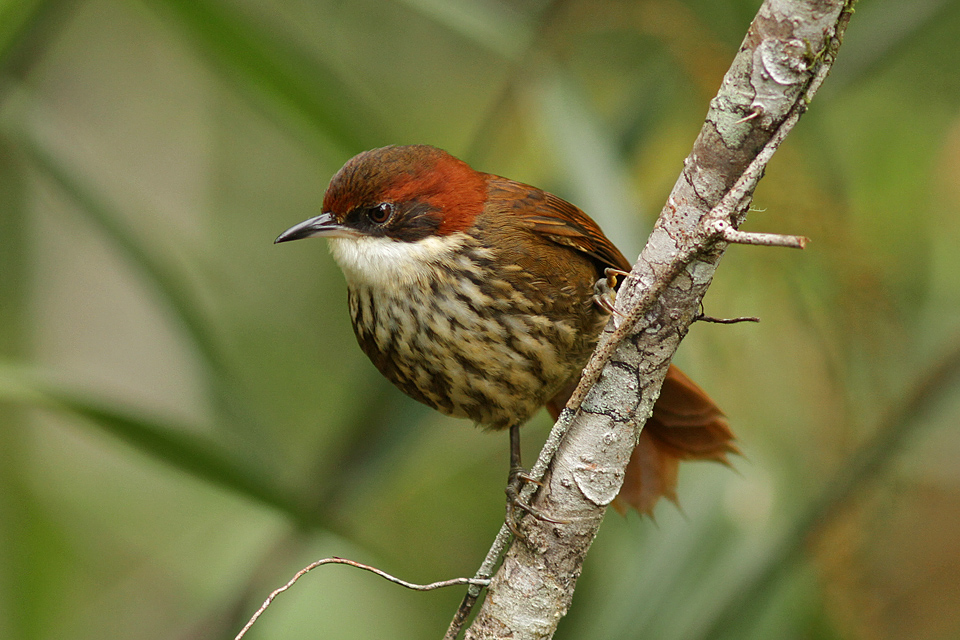Venezuela is located on the northern coast of South America, it has land borders with Colombia to the west and southwest, Guyana to the east and Brazil to the south. It also borders several Caribbean states over its marine territory. It is the sixth largest country in South America in terms of land area. Venezuela is considered one of the megadiverse countries of the world, it is placed sixth in terms of bird diversity, after Colombia, Peru, Brazil, Ecuador and Indonesia.
Of the 1,396 species present in the country, 26 are globally threatened and a further 30 are classified as Near Threatened (BirdLife International 2007). The recently described Carrizal Seedeater (Amaurospiza carrizalensis) is Venezuela's only 'Critically Endangered' bird.
Venezuela is important in providing habitat to migratory birds asstopover or overwintering sites, with 135 species coming from North America, 10 from the Caribbean and 23 from southern South America. Many coastal lagoons, beaches and mudflats represent the first landfall for millions of migratory species after a long flight over the Caribbean.
Venezuela has also been considered to hold the most important sites in northern South America for wintering Blue-winged Teal reaching numbers in excess of 35,000, mostly in wetlands in the east of the country.
For the birdwatcher interested in the Neotropical region, Venezuela is a classic destination. The traditional birding circuit in the northwest of the country remains as wonderful as ever, but as Venezuela's avifauna runs to nearly 1400 species, many of which cannot be seen in the most frequently visited parts of the country (i.e. Henri Pittier National Park, the Llanos and the Andes), many birders now concentrate on finding the many specialties of the eastern half of Venezuela. The ultimate prize here is the famed but rare Harpy Eagle, but the region also features curassows, trumpeters and macaws.
The region's most spectacular morphological feature are the Tepuis, huge and towering rocky outcrops that stick out of the jungle and are topped by extensive plateaus inhabited by a superb selection of endemic birds and plants. The higher slopes of these isolated mountains hold numerous specialities, including a series of regional endemics, including White and Bearded Bellbirds, Rose-coloured Piha, Red-banded Fruiteater and Scarlet-horned Manakin, while in the adjacent lowlands the exquisite Crimson Topaz, the out-of-this-world Capuchinbird, the fabulous Guianan Cock-of-the-Rock and the attractive Cayenne Jay can all be found.

Roraiman Barbtail, Escelara/Tepui endemic © Pete Morris
Showing the 23 Most Recent Trip Reports Posted
Junglaven, Venezuela, March 2004, author Surfbirds Admin (added September 27, 2004)
Venezuelan specialities - August - September 2003, author Surfbirds Admin (added September 27, 2004)
(This trip focused on Venezuelan endemics)
Venezuela - December 6th - 29th 1997, author Surfbirds Admin (added September 27, 2004)
Venezuela - December 1996, author Surfbirds Admin (added September 27, 2004)
Venezuela - June 27th - July 27th 2007, author Tom Goossens (added October 4, 2009)
South-east Venezuela - April 12th - 18th 2008, author Todd Pepper (added October 30, 2008)
(Las Caritas, Sierra de Lema, La Gran Sabana, Santa Elena for Tepui endemics)
Birding Venezuela: Henri Pittier National Park - 22nd - 25th October 2005, author Chris Sharpe (added November 17, 2005)
(Henri Pittier NP, Venezuela)
Venezuela - Isla de Margarita, March 2005, author Alan Miller (added March 19, 2005)
(Margarita, Burrowing Owl, Lesser Nighthawk, Vermilion Cardinal, Yellow Oriole, Magnificent Frigatebird)
Margarita - 19th January - 2nd February 2006, author David Ferguson (added March 17, 2006)
(Cattle Tyrant, Cocoi Heron, Buffy Hummingbird)
Birding Venezuela: North-west Venezuela - Coastal Cordillera, Merida Andes & Llanos, 7th - 21st January 2005, author Steve Elliott (added June 28, 2005)
(Venezuela, Andes, Llanos, Coastal Cordillera, Southern Pochard, Blackish Chat-Tyrant, Grey-naped Antpitta, Ochre-browed Thistletail, Andean Cock-of-the-Rock, Red-ruffed Fruitcrow, Golden Starfrontlet, Lyre-tailed Nightjar)
Venezuela (North-East) - March 2007, author Didier Godreau (added July 19, 2007)
(Henri Pittier, Yacambu, Morrocoy, Rancho Grande, Cortada de Maya, Ocumare, Venezuelan Wood-Quail, Rusty-flanked Crake, Plain-flanked Rail, Blood-eared Parakeet, Violet-chested Hummingbird, Black-throated Spinetail, Guttulated Foliage-gleaner.)
Venezuela (1994, 1995, 1997, 1998), author John van der Woude (link created January 25, 2011)
(NW, NE, central, Bolivar, Amazonas)
NW Venezuela - March 2005, author John van der Woude (link created January 25, 2011)
(Maracaibo area, Yacambu NP, Guaramacal NP)
Venezuelan High Andean Specialties: 2nd - 9th January 2006, author Joseph Thompson (added January 19, 2006)
Notes on birding Junglaven, Venezuela, author Guy Kirwan (added January 18, 2007)
(Junglaven, Amazonas)
Yacambu National Park and Barinas, Venezuela 23rd - 25th Sept 2005, author Joseph Thompson (added January 14, 2006)
H. Pittier National Park, Venezuela 19th - 21st May 2005, author Joseph Thompson (added January 14, 2006)
(Golden-winged Sparrow, Scallop-breasted Antpitta)
Venzuela (Caracas to Merida) 4 – 18 September 2004, author Gruff Dodd (added February 8, 2005)
Birding Eastern Venezuela and Henri Pittier National Park - 5th - 19th November 2005, author Peter Nash (added December 2, 2005)
(Venezuela, Capuchinbird, Harpy Eagle, Henri Pittier)
Venezuela: from Caracas to Coro - June 29 - July 3, 2006, author Jim Holmes (added August 23, 2006)
(Colonia Tovar, Henri Pittier National Park, East Falcon, and Coro)
Venezuela (Llanos - Andes - Junglaven) - November 2004, author Jan Vermeulen (added August 12, 2006)
(Llanos (Hato El Cedral), Yellow-knobbed Curassow, Agami Heron, Junglaven, Black-faced Hawk, Rufous winged Ground Cuckoo)
North-east Venzuela - endemics 4th March - 10th March 2005, author Joseph Thompson (added April 6, 2005)
(Our trip was designed to look for the local endemics in the states of Sucre and Monagas)
Venezuela, Cerro Roraima - 1st - 7th July 2008, author Andrew Spencer (link created April 19, 2009)
(tepui endemics)
No Sightings Have Been Posted for this Region Yet.